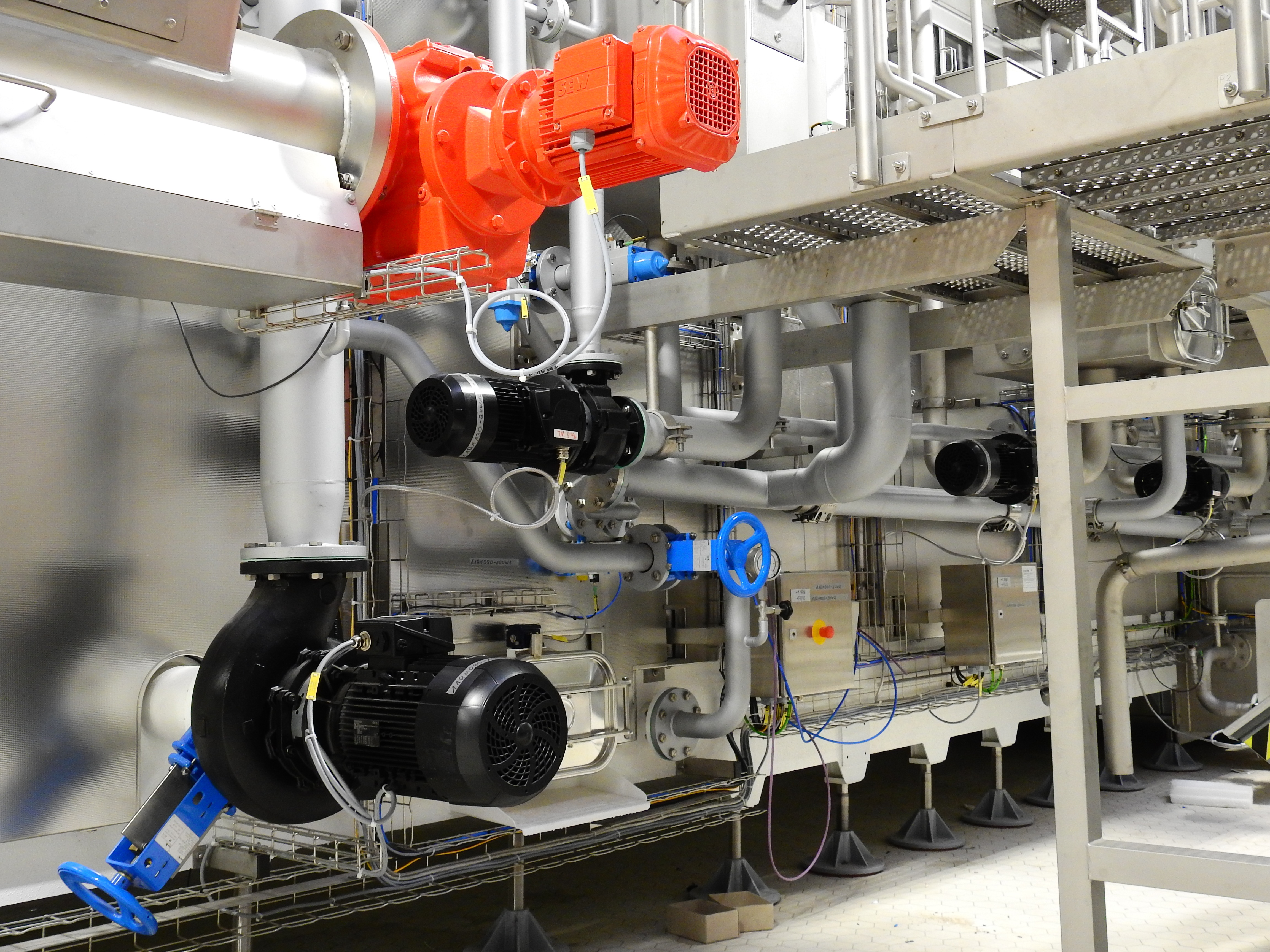Waste heat recovery is the process by which heat that would otherwise be lost in processes is recaptured and used elsewhere, improving the energy efficiency of the facility. According to the U.S. Department of Energy, “It is estimated that between 20 to 50% of industrial energy input is lost as waste heat in the form of hot exhaust gases, cooling water, and heat . . . .” This is just one example. Depending on the way in which a facility is set up, there are numerous examples of how to maximize waste heat recovery. This article will cover some broad examples involving chiller, manufacturing, and healthcare processes.
Chiller Waste Heat Recovery
In a typical cooling system, a chiller produces a controlled source of chilled water. In normal operations, the heat emitted from a chiller’s condenser is pushed out into the atmosphere. By installing a heat recovery system on a chiller, the heat that normally goes out into the environment could be captured and repurposed to preheat the facility’s domestic hot water system. The larger the chiller, the more energy can be saved.
Steam Boilers in Manufacturing
A variety of manufacturing processes waste heat. Steam boilers found in manufacturing facilities are excellent for waste heat recovery projects. One of the most critical times to recover heat is in the winter. The heat from manufacturing processes can be captured and repurposed to heat the building. The heat recovered could also preheat the air intake from the boiler, increasing the internal water temperature.
Prism Energy Services recently proposed a waste heat recovery project for one of our manufacturing customers. The customer’s boiler is used for steam generation for process and space heating. Operating 8,232 hours per year, the boiler produces 36 million lbs of steam annually. The condensate tank in the boiler room has a constant steam blowdown from the boiler, which is discharged into the atmosphere.
By using best practices to maximize waste heat recovery, Prism expects the customer will save 26,133 therms of natural gas annually, which is about $28,500 a year in energy cost savings.
Energy Recovery Ventilation
Energy recovery ventilation (ERV) is the process by which the energy produced to exhaust air within a building is exchanged to treat or precondition outside air in the HVAC system.
One of the most critical ERV examples is within hospitals. In a previous article, we discuss the importance of hospital indoor air quality. Hospitals must bring in 100% fresh, outside air for health and safety purposes. Considering this, winter is a period of a lot of energy loss. Cold air, which must be reheated to reach desired thermal comfort levels, will be brought into the building. By maximizing waste heat recovery through ERV, fresh air intake can be reheated faster and by using less energy.
Final Thoughts
Waste heat recovery is an excellent way to save energy and money. Waste heat that would otherwise be lost can be captured and repurposed to improve energy efficiency. Maximizing waste heat recovery for chillers and manufacturing and healthcare facilities are only a few examples. Depending on the how a facility is set up, both standard and customized waste heat recovery solutions can be implemented.




